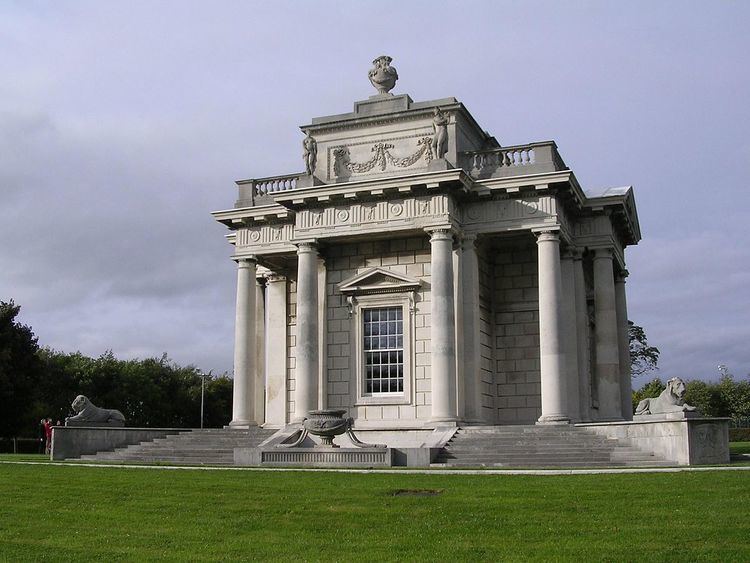Completed 1775 Address Clontarf, Dublin, Ireland Province Leinster Number of rooms 16 | Town or city Dublin Floor area 50 feet (15 m) Opened 1775 Phone +353 1 833 1618 | |
 | ||
Etymology Italian casino, "little house" Hours Open today · 10AM–6PMMonday10AM–6PMTuesday10AM–6PMWednesday10AM–6PMThursday10AM–6PMFriday10AM–6PMSaturday10AM–6PMSunday10AM–6PM Similar Garden of Remembrance, Rathfarnham Castle, Farmleigh, National Botanic Gardens, Dublin City Gallery The Hugh Lane Profiles | ||
Casino at marino an architectural gem
The Casino at Marino, located in Marino, Dublin, Ireland was designed by Scottish architect William Chambers for James Caulfeild, the 1st Earl of Charlemont, starting in the late 1750s and finishing around 1775. It is a small and perfect example of Neo-Classical architecture, situated in the gardens of Marino House. Although proud of the design, it is notable that due to his constant employment in England, Chambers was never able to visit the completed building.
Contents
Name
The name 'Casino' is the diminutive form of the 18th-century Italian word 'Casa' meaning 'House', thus 'Little House', and is not used in the modern sense of "gambling establishment". After his 9-year Grand Tour of Italy and Greece, Caulfield was taken with all things Italian, and decided to add a 'little house' to his estate, which he had already named after the town of Marino in Lazio.
Design
Widely regarded as the most important Neo-Classical building in Ireland, the Casino is actually quite small, measuring only fifty feet square to the outer columns. In plan, it takes the form of a Greek Cross with a pair of columns framing each projecting elevation. Seen from the outside, the building has the appearance of a single roomed structure, with a large panelled door on the north elevation and a single large window on each of the other elevations. This is all illusion, however, as it actually contains 16 rooms on three floors. Only two of the panels in the door open to allow entrance, and the panes of glass in the windows are subtly curved, disguising the partitioning which allows what looks like a single window to serve several separate rooms.
Many other tricks are used throughout the construction in order to preserve the apparent simplicity of the design. Four of the columns which surround the building are hollow and with a length of chain dangling in each, allows rainwater to drain down. The Roman funerary urns on the roof (designed by James Gandon) are used as chimneys. The interior, by Simon Vierpyl, includes a basement level with a kitchen and associated rooms, a main floor with reception rooms and a top storey with servants rooms and a State Bedroom. One of the rooms includes the Blue Salon. It includes a wooden parquet floor, with the Star of David in the center, stucco work on the ceiling and a white marble fireplace. It contains some very fine plasterwork ceilings and some elaborate hardwood parquet floors. Originally the Casino was linked to Marino House by a tunnel, although this has been blocked off due to building works in the area.
Gardens
The Casino is all that remains of the eighteenth-century garden demesne at Marino. Described by Charles T. Bowden in his Travel Guide of 1791 as a ‘terrestrial paradise’, the design of the landscape was inspired by Lord Charlemont’s extensive Grand Tour. A map of the gardens is available at https://commons.wikimedia.org/wiki/File:Map_of_Casino_Gardens.jpg .
